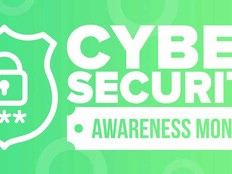What Is the NICE Framework?
The President’s Cup exemplifies the way the NICE Framework is used by multiple federal agencies, as well as in academia and private industry, to pinpoint the proficiencies of cybersecurity work. The goal is to provide universal terminology that supports the ever-growing demand for a robust cybersecurity workforce across government sectors.
It’s a “lingua franca,” a common means of communication among groups of different backgrounds, says James Stanger, chief technology evangelist for CompTIA, which supports the tech industry and its professionals with education, training, certification programs and market research.
Even within the realm of U.S. government information technology, various specialty areas don’t speak the same language. But they all struggle to funnel more people into cybersecurity careers while helping those with tenure in the field to update their knowledge and skills.
“One of the major reasons why NICE was created was because, basically, we need more workers,” Stanger says. “We need upskilled workers, and this is an industrywide problem. This is why NICE is so admirable.”
The National Institute of Standards and Technology developed the NICE Framework in 2017. The idea to codify descriptions of cybersecurity work, though, started about 10 years earlier among agencies that realized they didn’t have well-defined roles for cybersecurity and couldn’t easily hire for needed positions until they did.
“There wasn’t that common language to help describe what people in these different cybersecurity positions within different agencies were doing,” says Karen Wetzel, manager of the NICE Framework for NIST.
“When one person moved to another position, it was unclear as to what that job meant or what that role was meant to be,” she adds.












